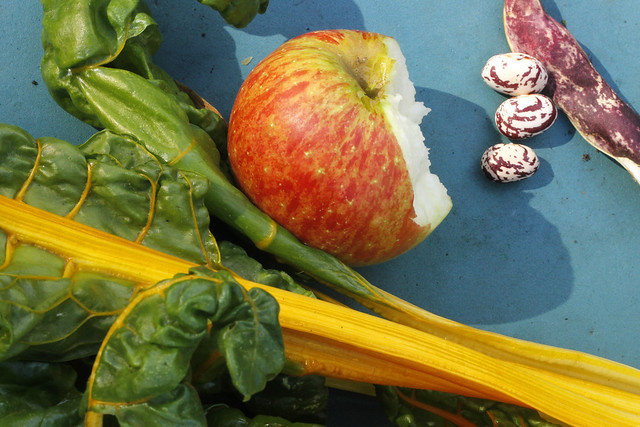There's bulbs to plant. I have a large basket full waiting to be planted; alliums, daffodils, snowdrops and crocuses can go in now so that they have a chance to develop roots while the soil is still warm - that's particularly true of alliums - and I also have about 250 tulip bulbs which I'll plant next month when it's a bit colder. That's nowhere near the thousands of bulbs that are planted in public gardens but I know my limitations - kneeling pads, restorative yoga and Deep Heat at the ready.
Every year I add to the previous year's tulips; I never lift the bulbs when they've finished flowering but nip off the flowering stalk and wait for the leaves to die back. Most of the bulbs have proved reliably perennial so far - fingers crossed for this year as well, although realistically they'll be less vigorous year on year. Bargains are a necessity as my work in the communal gardens here is not funded. This year, I'm very taken with 'Sherbet' bulbs from Morrison's supermarket. I grew them last year and there were some absolute beauties in the mix. I paid £2 per bag of 12 which I think is quite good, even with no budget to speak of.
Another job waiting for my attention is the planting of several grasses in the middle garden. Remember that space? Yep, big plans, not enough time. It's mostly been used as a holding/nursery area for plants this year while I flesh out a plan and watch how the light falls across the garden throughout the year. As luck would have it, I collected a car load of plants from the T2 tea collaboration with Rich Landscapes last week and autumn is a good time to plant perennials. I'm hoping to dedicate a large part of my weekend to weeding, planting and pruning; it's much needed.
The veg patch is ticking over at the moment. Braeburn apples have ripened and are, amazingly (touch wood), still on the tree. I usually pick one a day to munch on. A few pears need to be picked and ripened indoors and, huge excitement, I've got five quinces ripening! This is a first and I'm really looking forward to cooking with those - or even just being able to smell the famous perfumed quince at last.
Borlotti beans have coloured up beautifully and are now an astonishingly vibrant red. I don't know yet what they taste like as I'm saving any ripened pods until I have enough to cook with. Likewise with the tomatoes. Remember my despair a few weeks back? I needn't have panicked, I now have bowls of beautiful yellow plum shaped tomatoes - and no sign of blight. I'm still going to choose my tomato seeds with better care next year though. It's worth noting that Banana Legs (the yellow plum tomatoes) were prolific, each fruit 2 to 3 inches long and each plant growing several clusters of 5 to 6 fruits. I bought the seeds from Pennard Plants at one of the early RHS shows.
I've still got to plant out Cavolo and curly kale but it's a question of where? The patch is still stuffed with chard, beetroot (small leaves of both excellent in salads), broccoli, rhubarb and radishes that I'm letting flower so I can try the pods - supposedly a restaurant delicacy, don't you know!
 |
| ~Orache (Atriplex rubra) aka Mountain Spinach and Fennel - both self seed enthusiastically at this time. ~ |
And then there's seed saving ... and sowing for next year's annuals ... and mulching ... and, and, and. Onwards, always onwards.
Like I say, up and at 'em.







